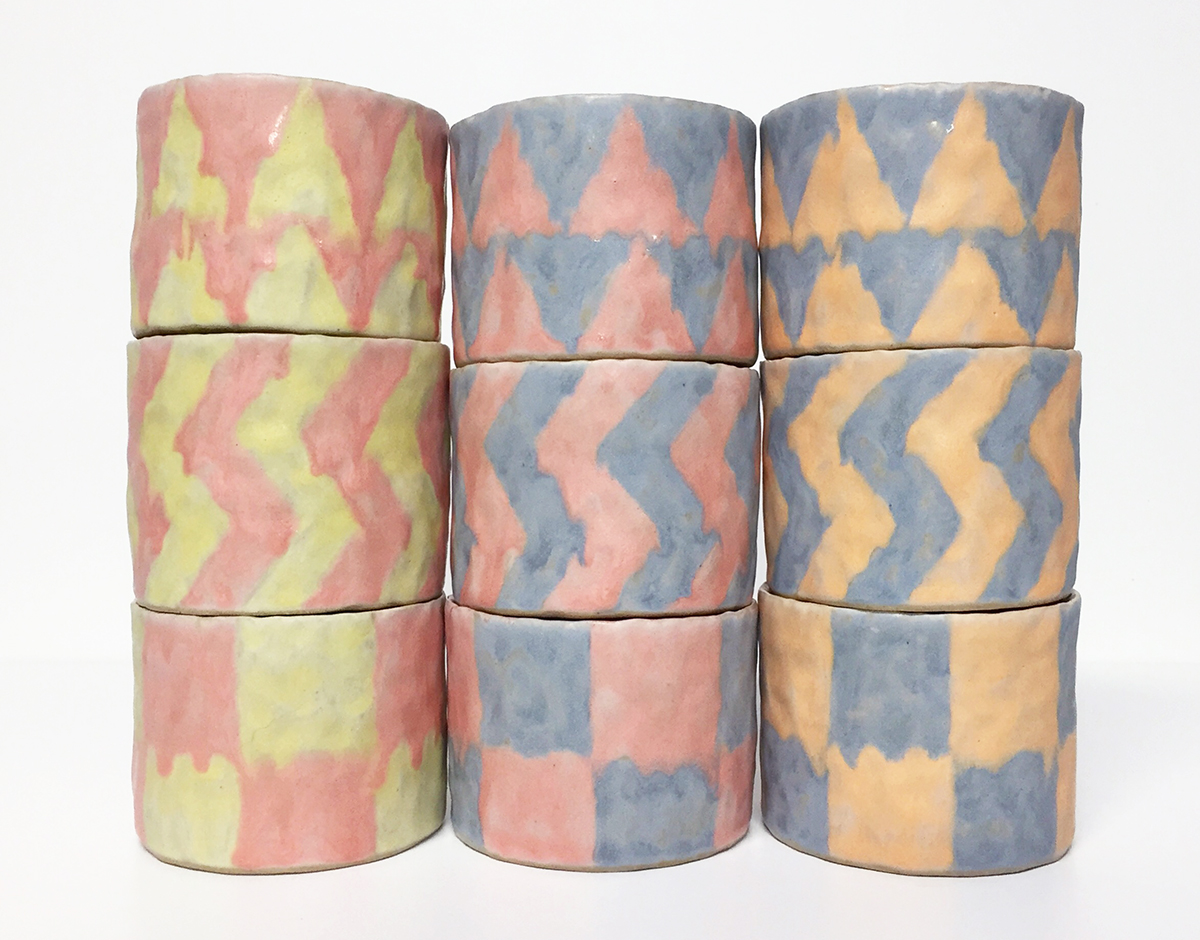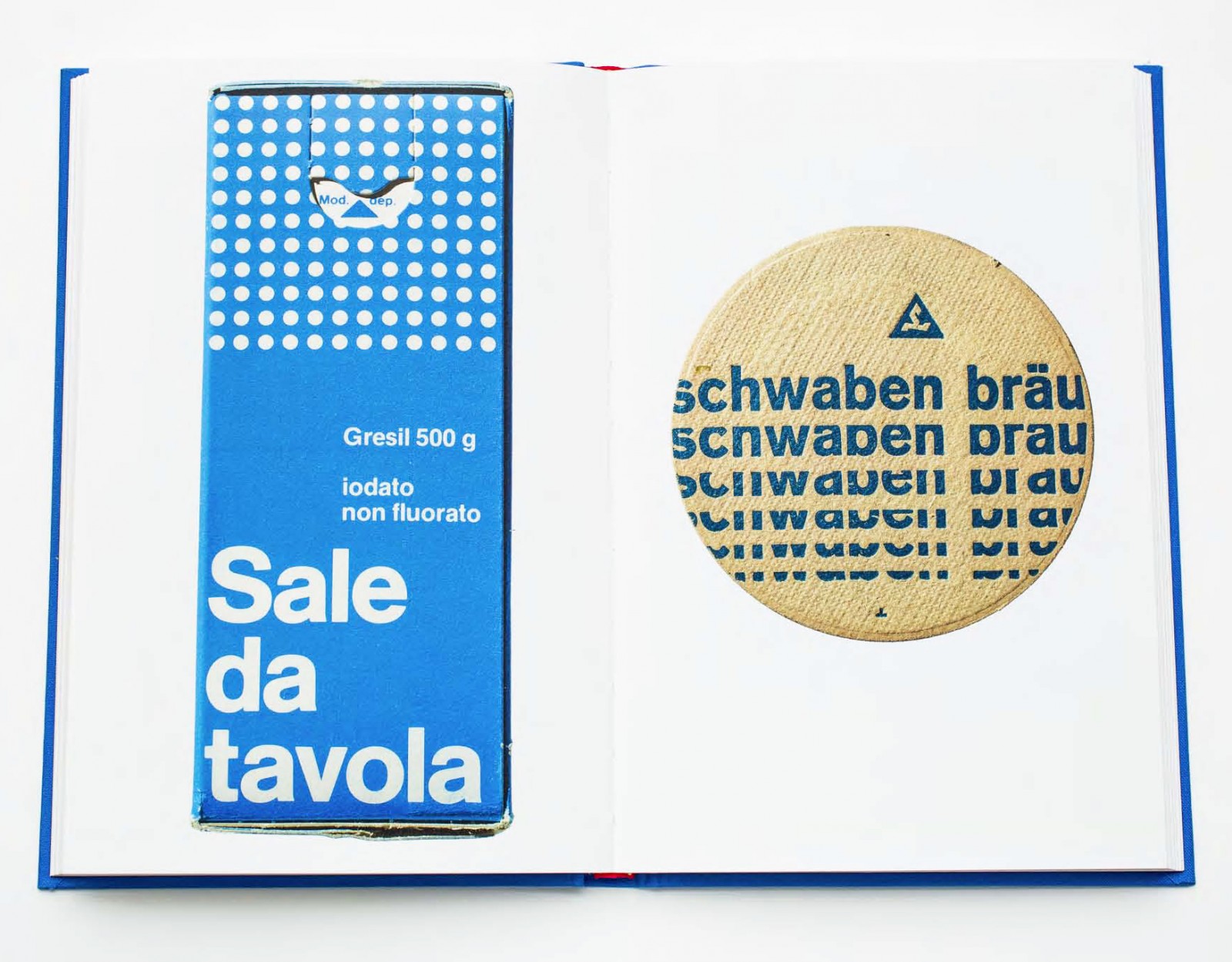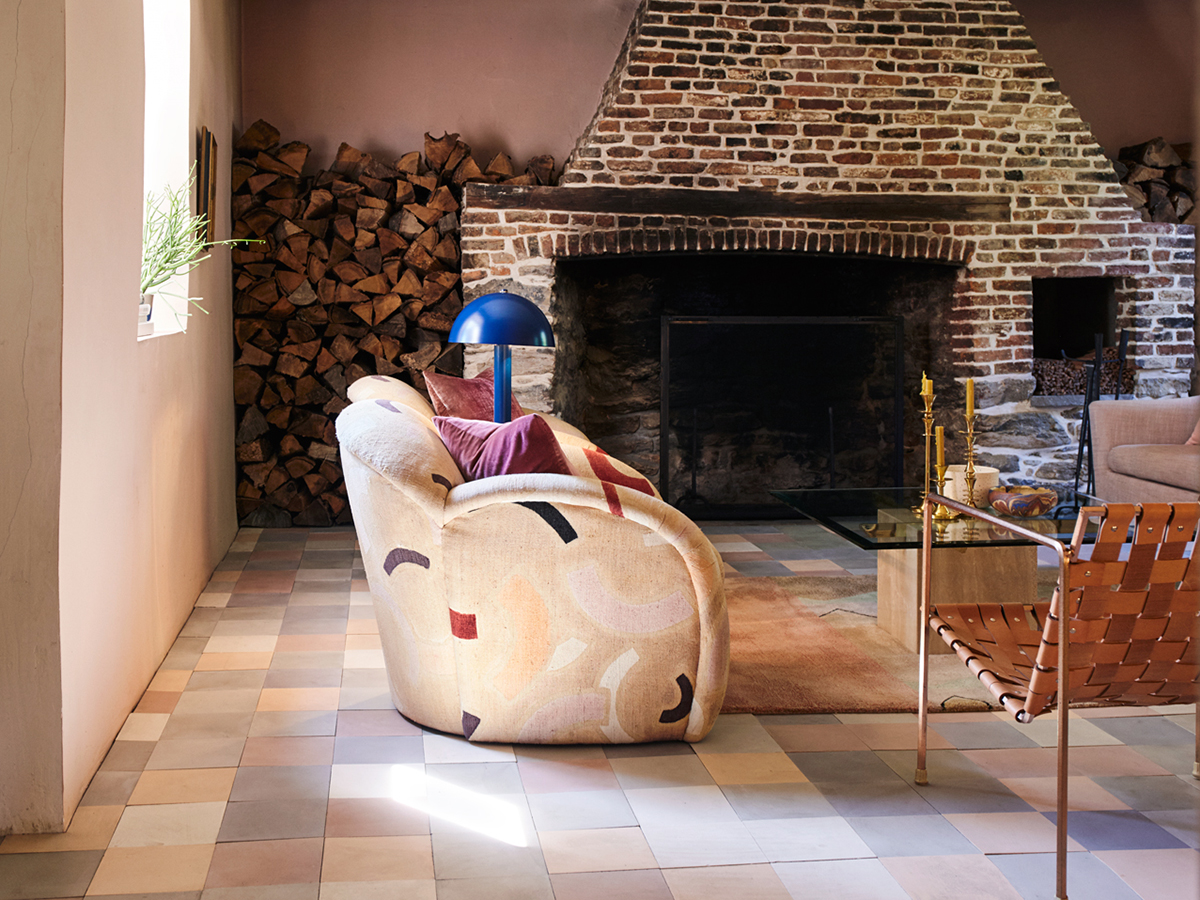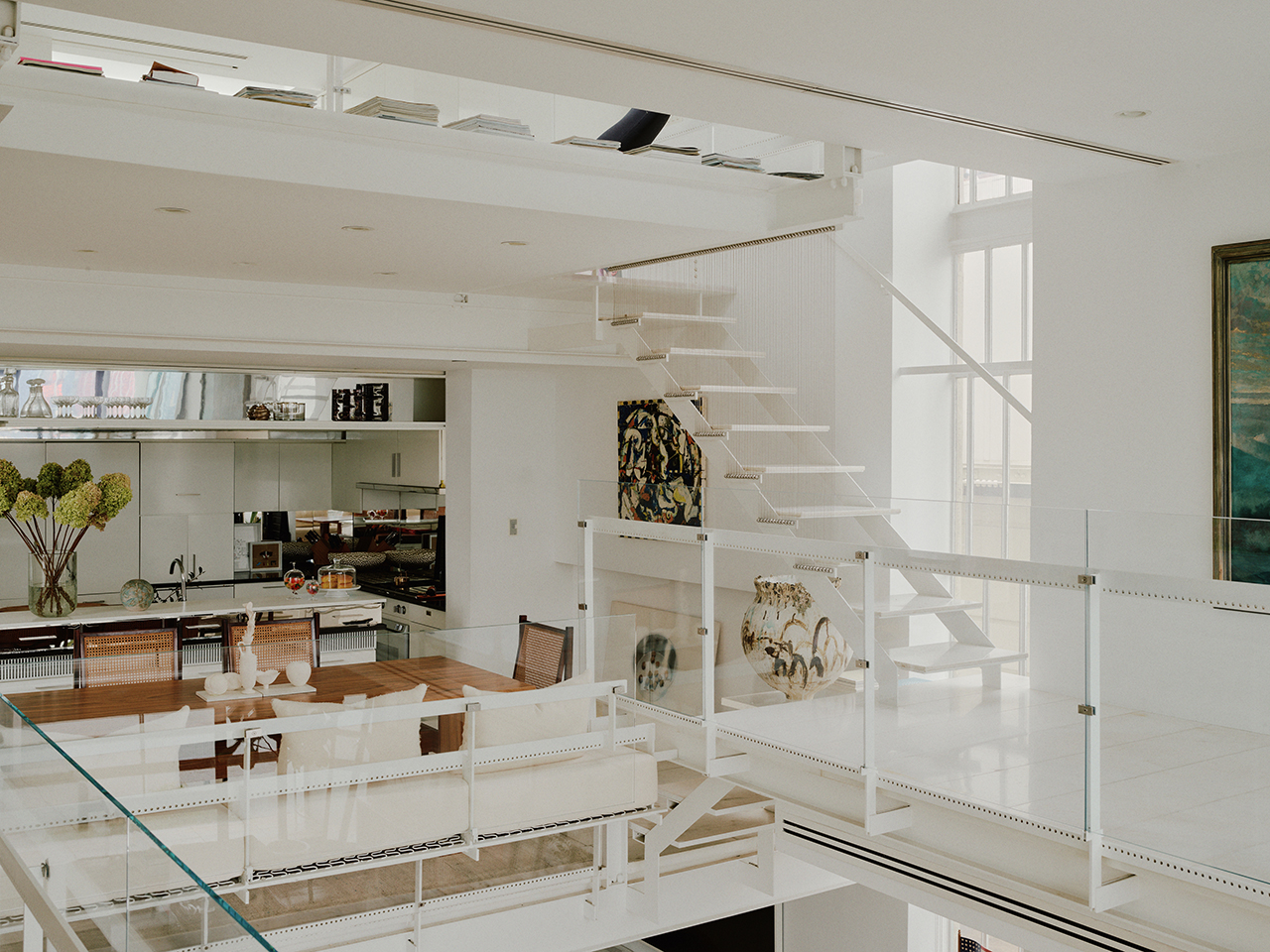
02.01.24
Interiors
How Do You Make a Home Inside a Monument? Ask the Gachots, Who Just Spent Three Years Living in a Paul Rudolph Masterpiece
In 1976, the architect Paul Rudolph bought the 19th-century townhouse at 23 Beekman Place where he’d had an apartment since the early ’60s. While keeping the existing building as residences, he constructed his now-landmarked, multi-level penthouse on top of it: a steel and cement work of art that is rigorous and spare in its lines yet dizzying in its scope and form. Inside, beams clad in reflective material support a light-filled space with few walls, delineated by platforms and catwalks and cantilevered, landscaped terraces with spectacular views out over FDR Drive and the East River. For Rudolph, it was a kind of creative laboratory — and it’s also not hard to imagine it as a site for glamorous, louche, late disco-era parties. But how about a family home? Enter designers John and Christine Gachot, of New York’s Gachot, known for the warm modernism they bring to their high-end interiors.
The Gachots had been living in a place on Bond Street for 20 years. With two sons, and a dog, it was only getting smaller, and they’d been thinking of making a change when COVID hit. During the pandemic, the family decamped to their home on Shelter Island for about a year, and then as “things were slowly starting to shift and there was a great light at the end of the tunnel,” says Christine, “we thought, well, maybe we’ll poke around and look for some places.” One that happened to be available to rent was the Rudolph penthouse. A bit of an unbelievable opportunity at any moment, but even more so at a time when the city was starting to come back to life, yet even doing everyday things felt strange and tentative, if not totally destabilizing. It was in this context that they first walked into the apartment.
“We show up to this legendary space; we haven’t been without our children or outside of our little house for about a year,” Christine says, “and it’s really crazy, because it’s on — how many different levels is it?” Four floors, says John, but actually “27 levels – it’s a series of little platforms that pinwheel around and around and around.” Floors you could see through, stark white surfaces, floating stairs. As disorientating as it was, it was nothing short of extraordinary. So, the downtown family ventured up — way up, to a “townhouse in the sky,” as Christine says. John puts it this way: It was “like living inside of a sculpture.”
We spoke to the Gachots about how such an iconic space was able to absorb and mesh with their style but also how living there changed their own approach toward design. And how the uncomfortable awkwardness of inhabiting a place with no doors… and their teenagers… was more than worth it for a once-in-a-lifetime experience. As Christine describes it: “We really got to live in someone else’s dynamic dream for three years.” Just before that time came to an end, their friend, photographer William Jess Laird, captured it all in these images.
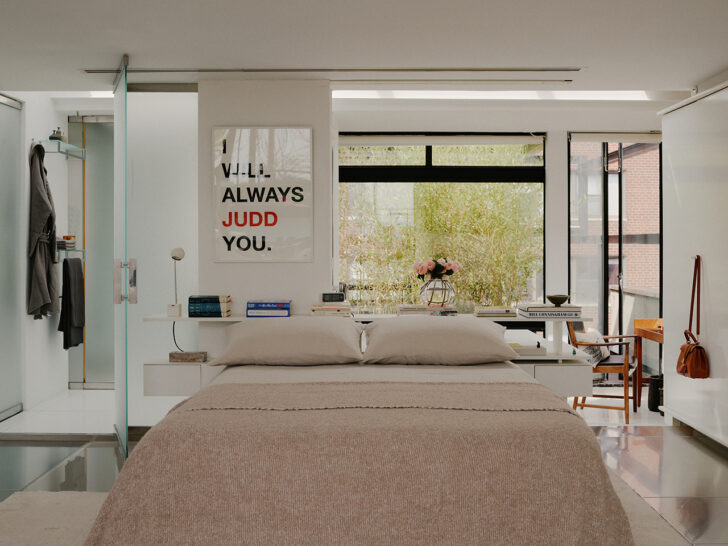
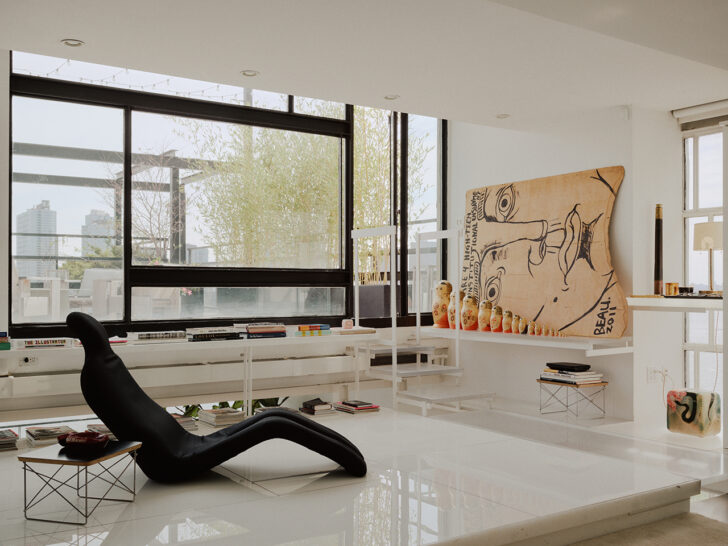
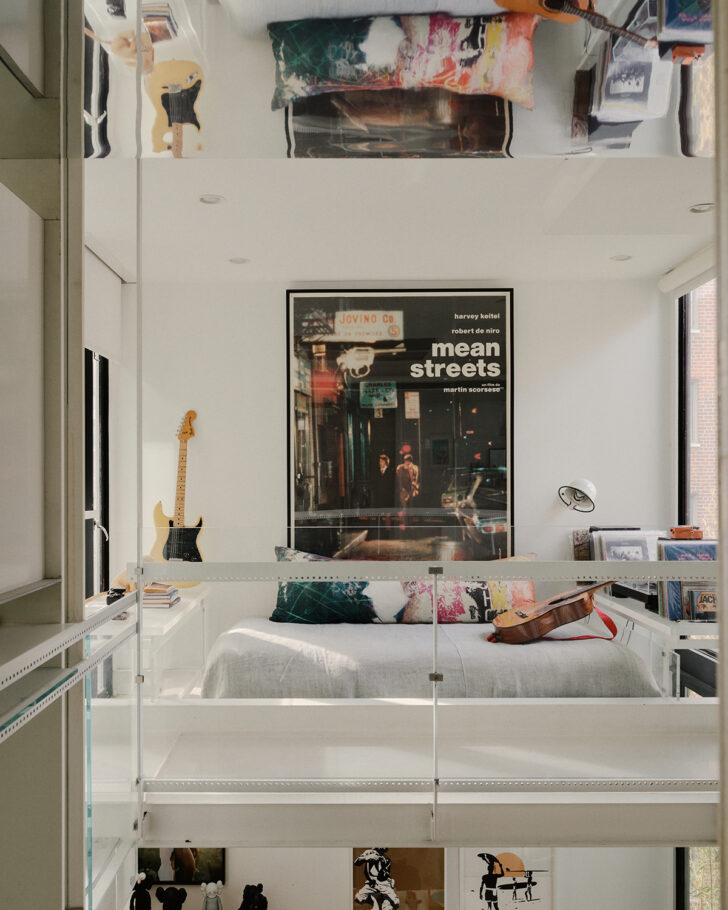
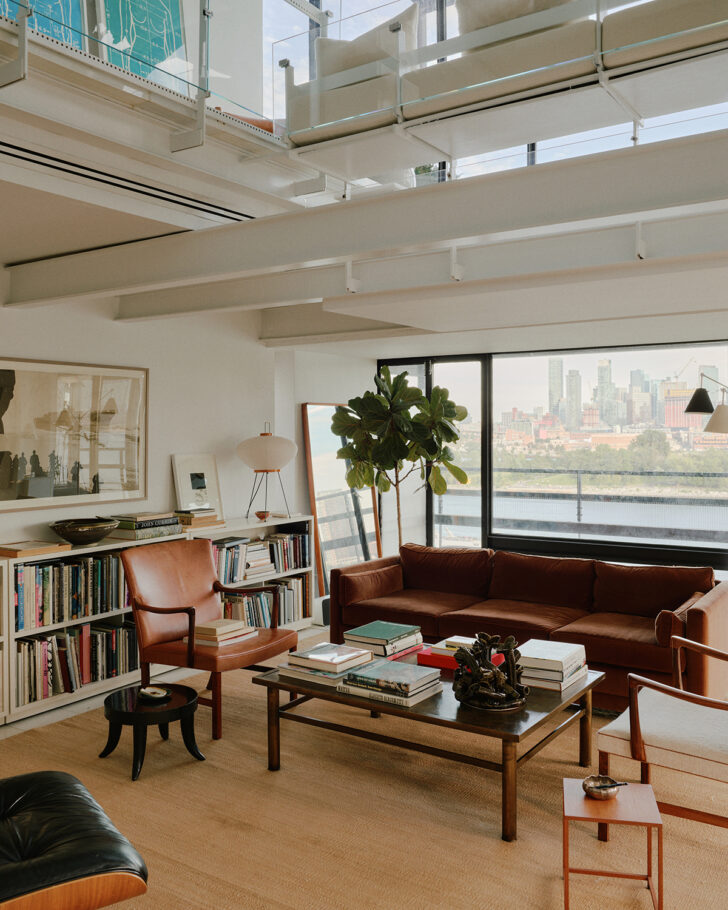
The apartment is a blank white space in some ways, but it’s also incredibly distinctive and idiosyncratic, with all of these levels and details. How did you make it your own, and make it homey, a place where your family could live comfortably?
John: What’s kind of amazing about the place is that all the things we’ve been toting around for years, we brought in. It’s a completely different aesthetic, a completely different environment, different period, but in a nice way they kind of counterbalanced the — well, people call Paul Rudolph a Brutalist, but this is actually more of a sculpture. It’s very mechanical. There’s no wood in the apartment. It’s all steel, stone, glass, and paint. And offsetting it with our collection of midcentury furniture and things that we’ve collected over time that we just started layering in, it felt kind of appropriate.
The other thing about the apartment is that it is beautifully scaled. Each space is thought of as a kind of inverse sculpture. The proportion of the rooms, the view and a few corridors that you set up from where you sit, is just ingeniously thought through. When you have some furniture to ground the space, you actually see all the details in these spaces.
Christine: You know, this could have gone two different ways. We could’ve leaned in and gone all the way with that kind of stark minimalism and John was like, look, let’s go a little more organic. So we had large carpets made that were very organic and it was that juxtaposition, I think, that worked very well to warm it up.
J: It’s a bit like living on a ship. It’s so thoughtfully done and what is so magical on that little part of Beekman Place is that view. You’re cantilevered out over the East River and the amount of light that you get from these two main dominant views is just incredible. This apartment could never be reproduced. It’s something that hopefully someone buys and preserves.
C: And the terraces! Terraces were everywhere. That idea, especially in New York City, in any urban environment, to have that interior/exterior sensibility and way of living, you’re opening up terrace doors and your indoors are outdoors all of a sudden. We had a woodburning fireplace there, it was pretty awesome. We did a lot of landscaping. We landscaped all the terraces.
Were there limitations, because it’s a landmarked space, on what you could do?
C: You can’t change the interior. You really had to cosmetically come in and the narrative had to be about furniture and accessories, artwork. What was there was there and you had to play on that.
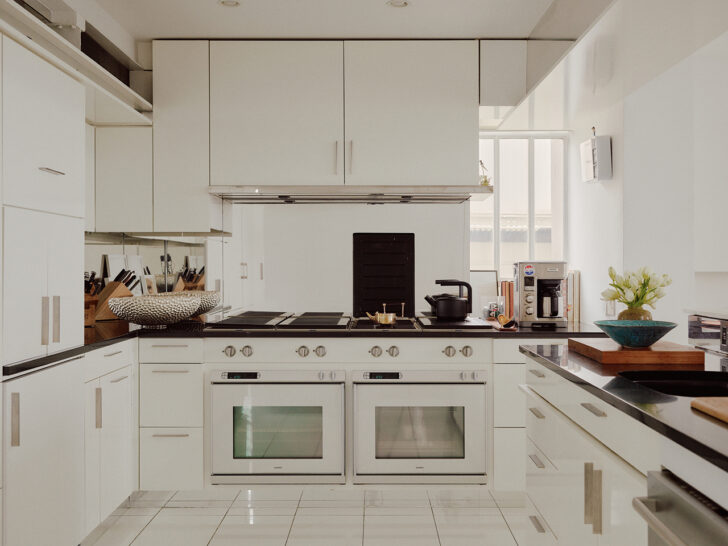
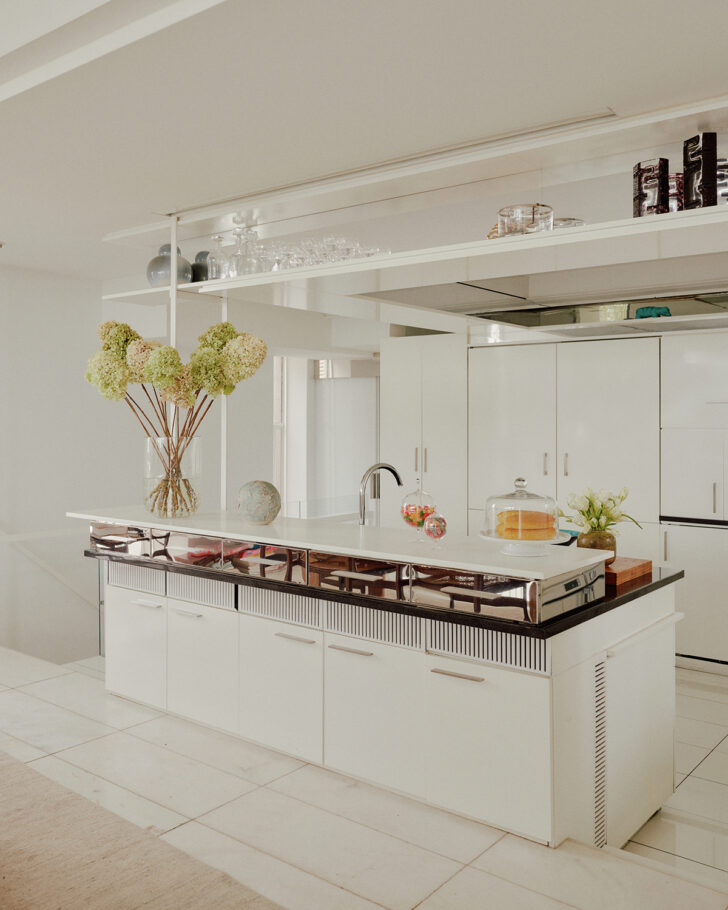
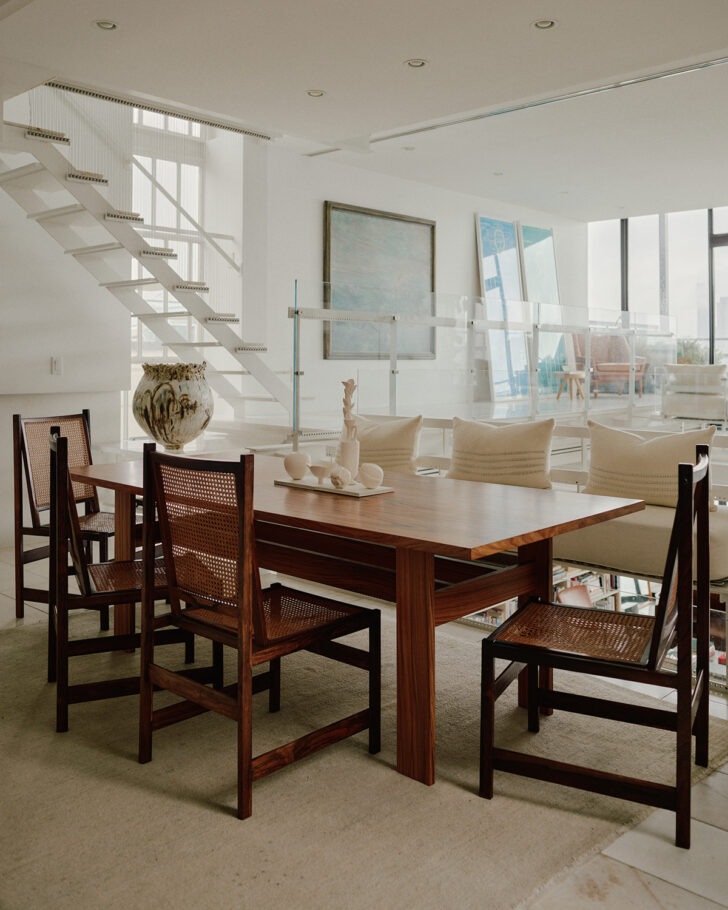
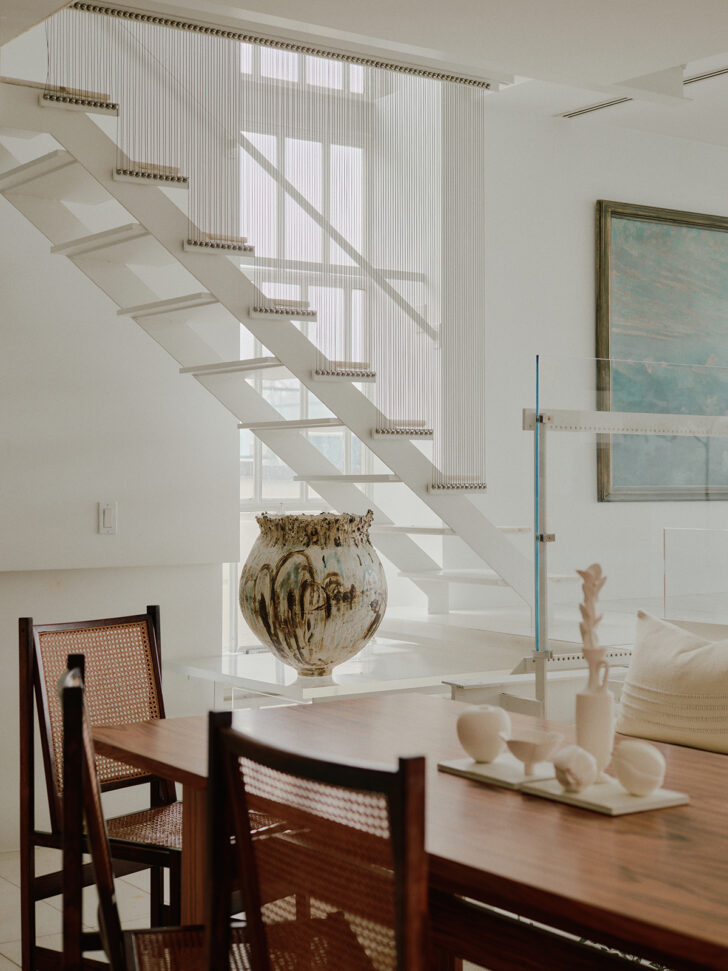
And did you have a sense, when you moved in, of how you wanted it to look or did that evolve as you lived there?
J: Part of our job was to organize the things we had and to understand where they go and what the aesthetics of those are and how they fit into the layout. And then those key pieces that needed to make the rooms complete and useful — those were the design challenges or opportunities. Like, do we lean into this modernist look, or do we balance that with a bit more earthiness?
C: We made one of our custom sofas, carpets, all kinds of Gachot brand stuff. It’s always nice when you have an excuse to make something for yourself. It’s a privilege.
J: You had this really great skeleton that just needed to be a little layered into to make it appropriate for a family. Having little corners with throw pillows and blankets, that kind of layering just softened little bits and drew you into where you’d want to sit. Like I said, I feel like the master plan was already laid out.
C: We really love warm modernism. It’s in our DNA, it’s what we do best, whether it’s at Paul Rudolph or we have a center-stair very traditional colonial on Shelter Island. We’re just comfortable in that space, and I think our sons are, too. We couldn’t really lean into that super pop thing… so we leaned into what we love, and it seemed to just fit on his perfect canvas.
J: If you look at what Paul Rudolph originally did when he was living there, it was really layered. He was a huge collector of textiles and objects. He traveled around the world and grabbed all these things that were completely different. I remember seeing this one grasscloth cape that he picked up somewhere in Indonesia and he had it displayed on this super modern little steel stand. It triggered that idea that you could do something in here that was textural. That’s what he had done within this environment. The depth of the sofas and things like that, you could tell that comfort beyond the aesthetic was a big part of it.
C: It was his home. Just like it was our home for a little while. And I know that other people who have lived there over the years, but it wasn’t their home, it was a crash pad, or it was a studio, something to showcase. But it was our home for three years.
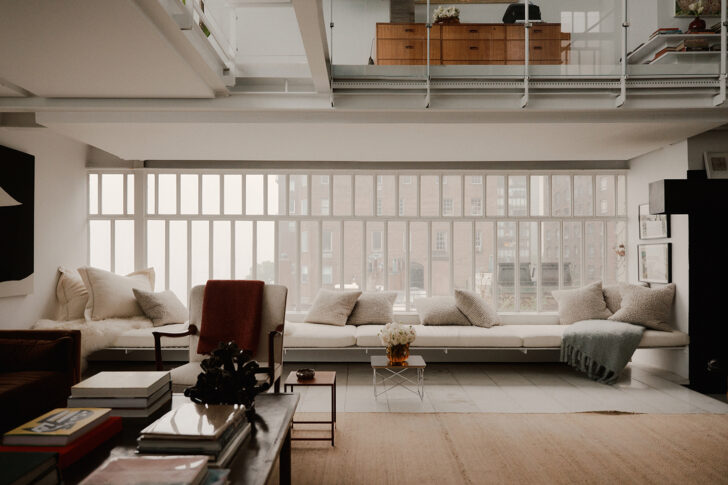
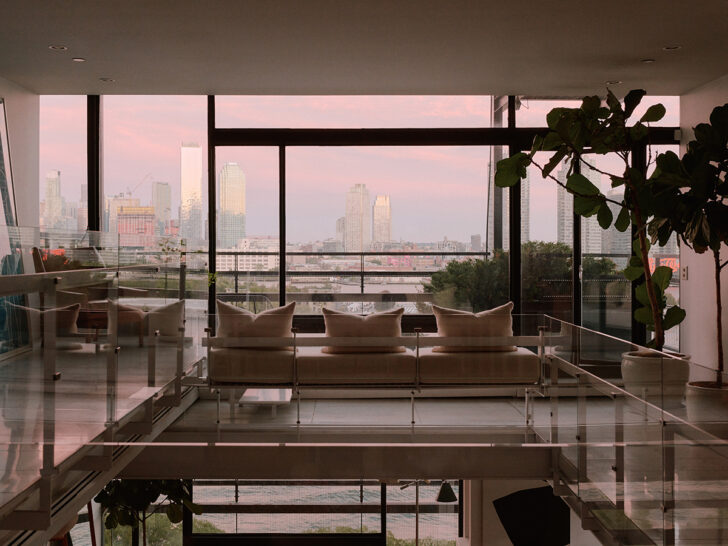
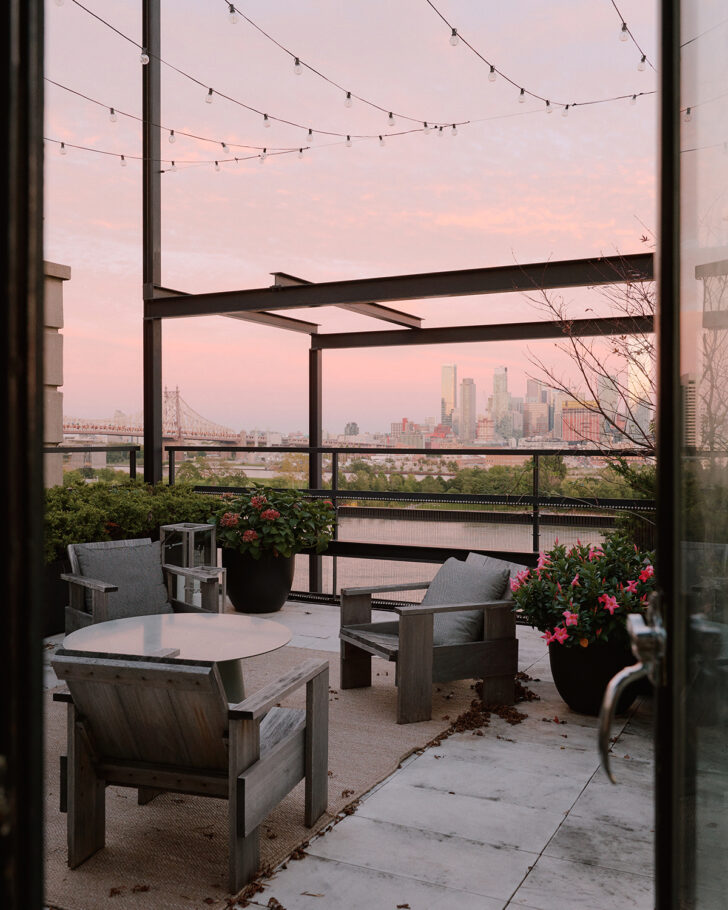
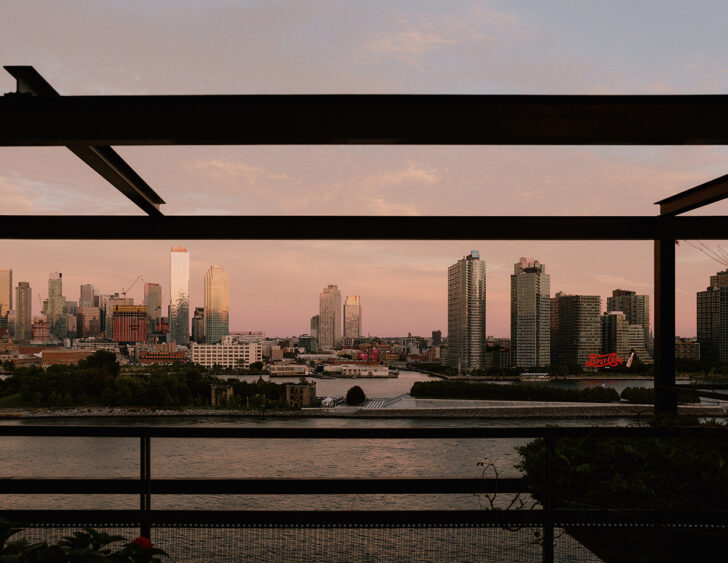 What was your favorite part of living there?
What was your favorite part of living there?
C: For me it was the triple New York wish-list experience: the view of the East River with the Pepsi sign, one of the most iconic things; then you had a wood-burning fireplace; and then you had exterior terraces everywhere. Maybe you get one of those in New York. Maybe two. But you don’t get that view.
J: Our weekend house got a lot less use I think because we had everything we needed on Beekman Place: We’re sitting on a terrace, there’s a fire in the background, it had every component for different environments and seasons.
What was the biggest challenge, from a design perspective, of living there?
J: Moving in! The movers were like, we hope you live here forever. [Laughs] Physically getting things into the apartment was very difficult because the doors are 20 inches wide, the elevator’s the size of a phone booth and once you walk up to the first floor of the penthouse –
C: The lift doesn’t go all the way up, so you walk up one flight of stairs and then to get to the kitchen — to unload groceries, let’s say — you’re going another two. You were living in a townhouse in the sky. But by the way, come on, who cares?
J: Your legs are in great shape.
C: And then you know, the boys’ rooms were on two levels and one of [them], it’s not a room, it’s a bed that’s kind of floating above the bedroom and I think that there were moments of What are we doing here? That was a little challenging. There are no doors. We’re living with two teenage boys and no doors. Talk about too much information, on everyone’s part. Yeah. That was a lot to deal with for three years. Their friends saw a lot. We saw a lot of their friends. [Laughs] It was crazy.
So, the privacy issues. And to some extent, the bifurcation of space. Where we’re living now is all on one level. We tend to circulate about the space with a little more ease. And then, you know, the dog, there were moments when you’d hold your breath… Storage was another one. But in general, there weren’t a lot of complaints.
J: Once the framework for the house was designed — meaning the steel beams that set up the armature for this sculpture — then they put the little pads down to circulate and walk, and the volumes for storage were done more for aesthetics rather than practicality.
C: And remember, it was originally for one person. If you were an individual living there, or even a couple, that’s very different than four people, a dog, dog food. It’s just a little different.
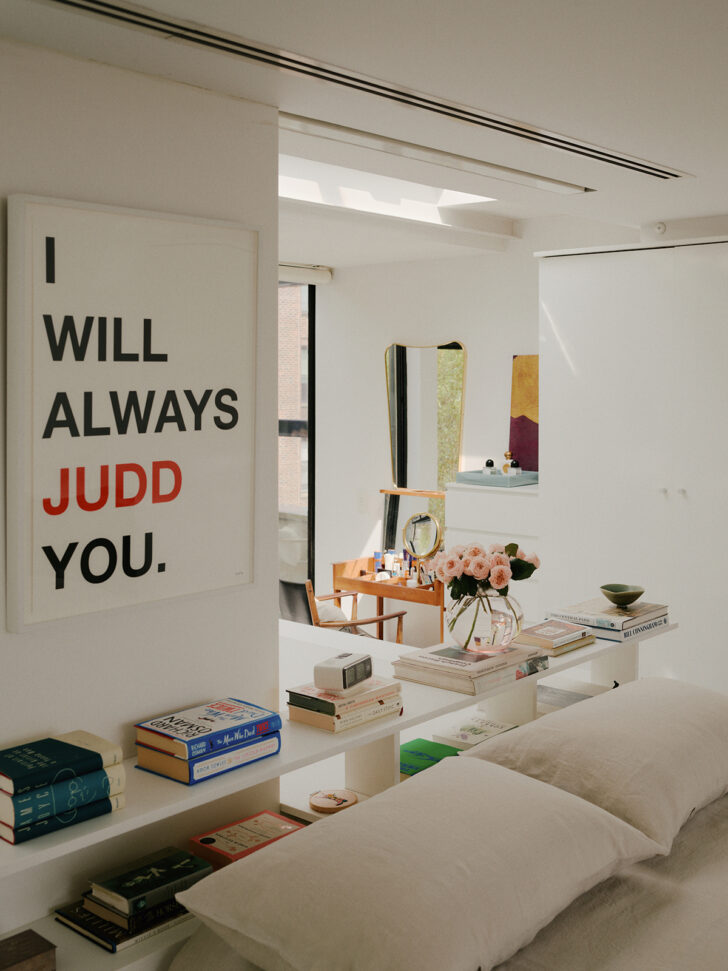
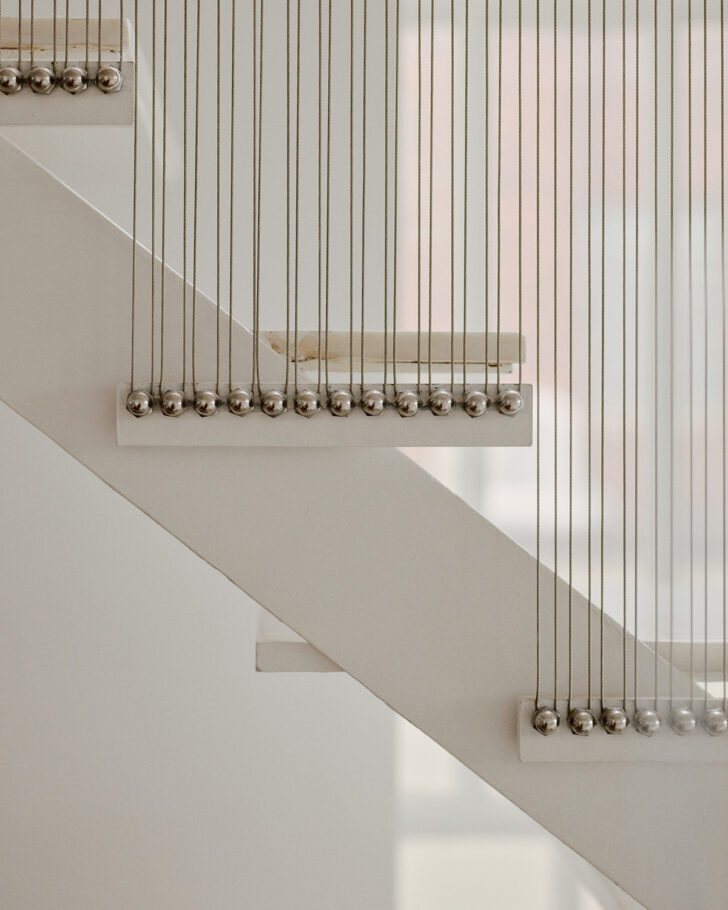
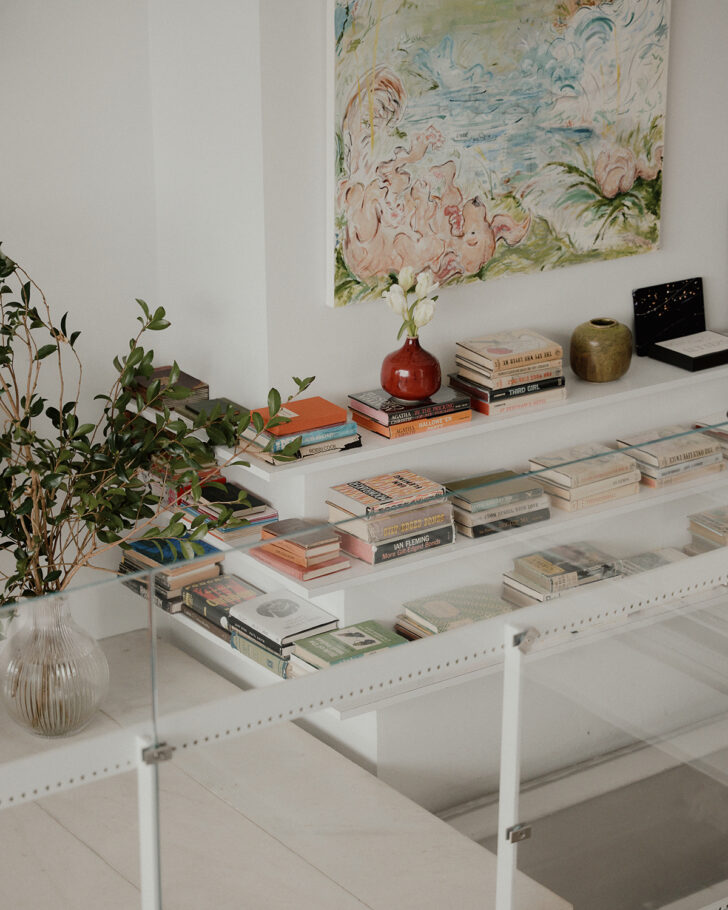
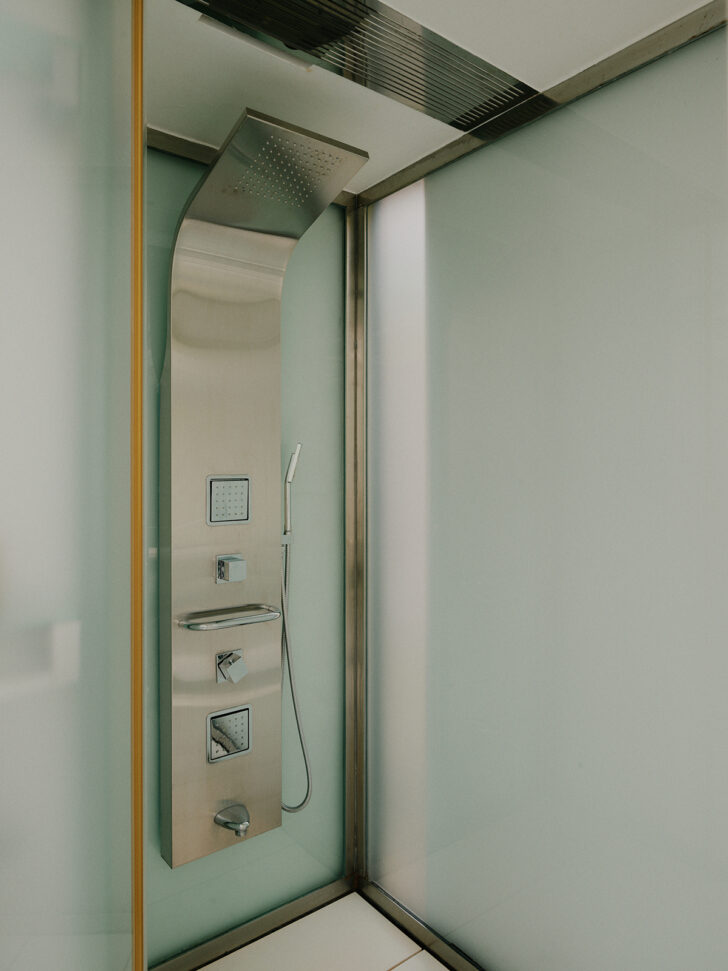
In terms of that idea of balancing aesthetics with practicality, did living there teach you anything that you might apply to where you’re living now or to your design work?
J: It was such a balance of asymmetry. All the things I’d learned, or thought, about center lines and the basic rules of more traditional architectural historic references — to see this apartment put together this way was incredible. I probably have 10,000 photographs of the apartment because there were so many things I discovered. If it felt and looked right, it didn’t necessarily have to follow the rules of design. For me, that was mind-blowing —realizing that you can work on paper all you want, but essentially this guy would come in during construction and move the beam and he got it just right. Just, wow.
C: John and I have worked together for a very long time, along with many members of our team, and if you had a dollar for every time John would say: You need symmetry, this isn’t symmetrical, we wouldn’t be working right now. And then John lived in the Rudolph apartment, and he would come into meetings like, It’s okay if it’s off-center. And people would be like –
J: Who’s that?
C: It was hilarious.
J: I mean, it’s balance. Tall and thin can match with low and squat if they’re balanced. This was like living inside of a sculpture. I started out as an artist before I got into design and I could totally relate to that.
C: I will say the flipside to that is that we really do believe in function. It’s gotta work. We’re big believers in that, we do a lot of hospitality work and restaurants. And since we’ve moved and we’re living in a kind of classic seven, I will say that there is just a proper place to put everything. There’s room, there’s more storage, bookcases, you really don’t ever fight to live here, you don’t have to want it, it’s so much easier. And yet that fight and effort was so worth living there. You had to want to live there. Our youngest son who lives with us fulltime, we thought he would be miserable in this new apartment, but it’s amazing. He loves it: There’s a table in the kitchen. His friends all hang out there and make pancakes. He has a proper room. A door!
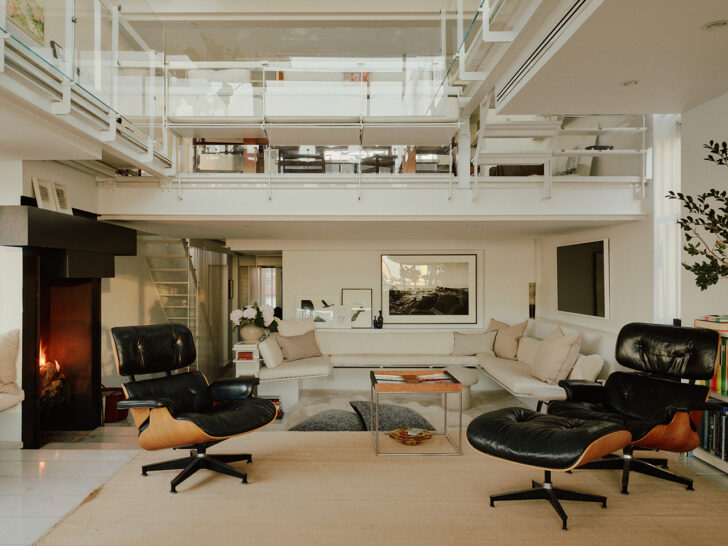
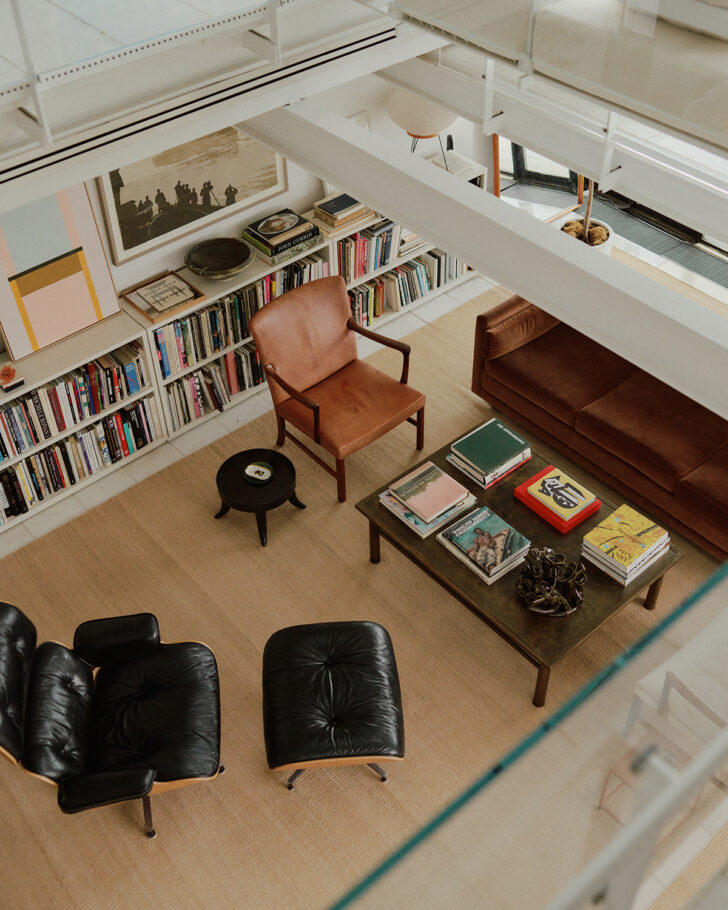
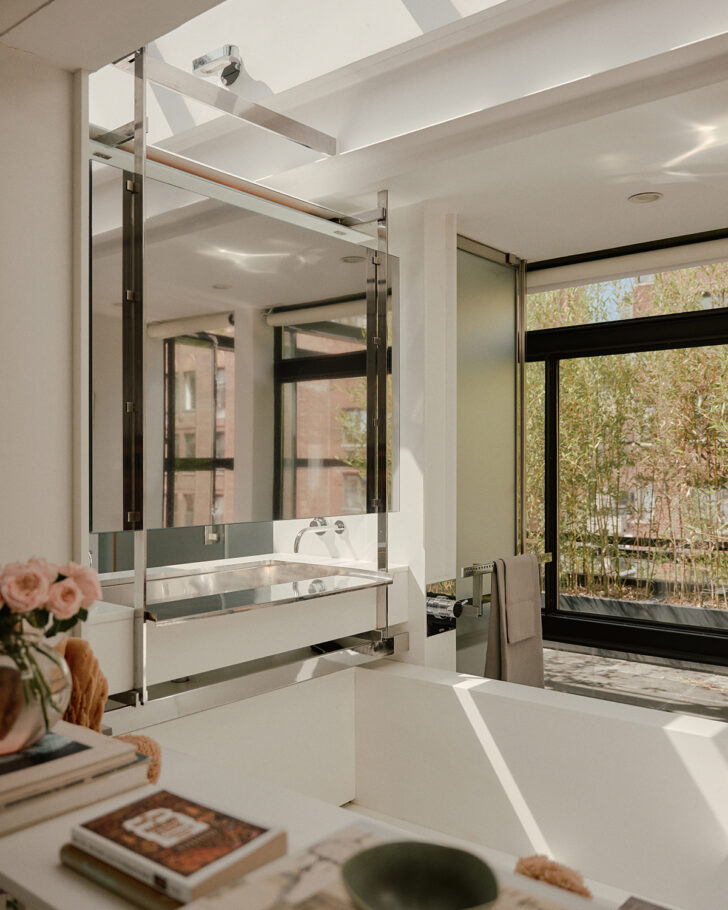
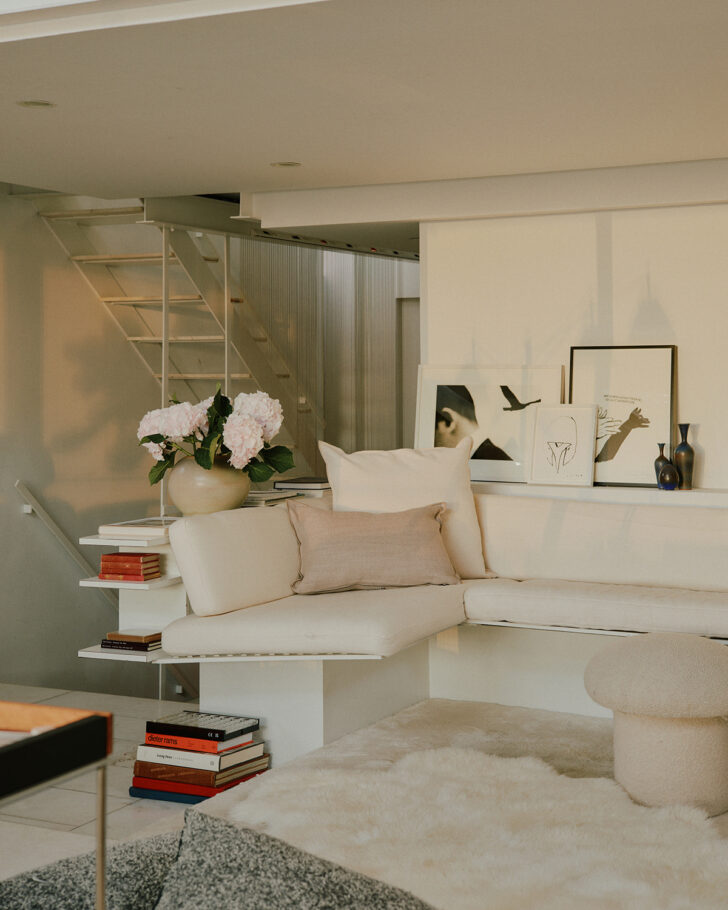
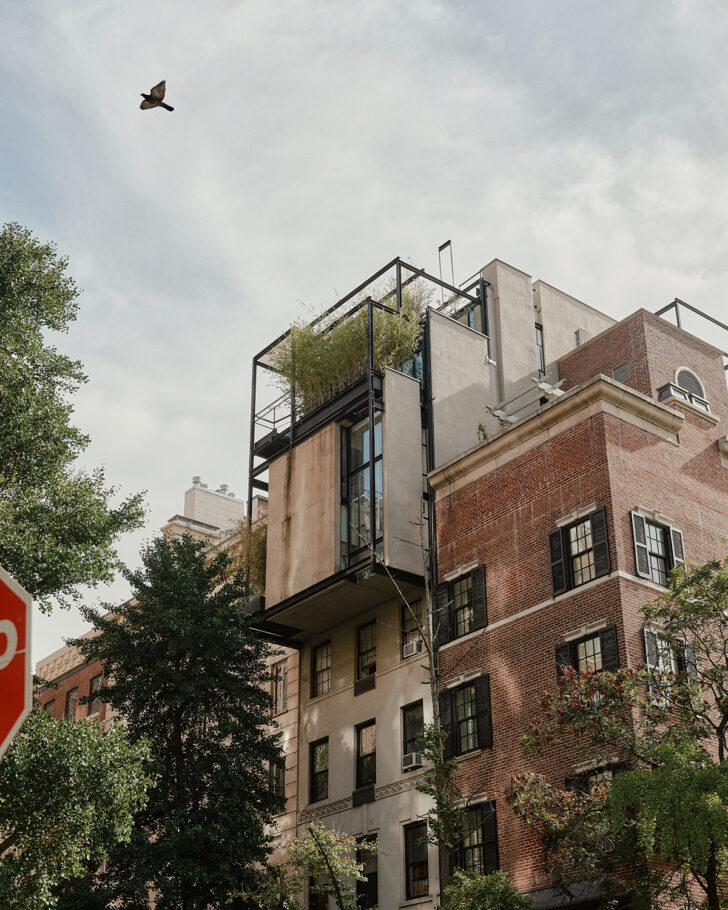
Why did you end up leaving?
J: They were selling it. We knew all along that it was a three-year commitment. We thought maybe there would be an extra year, but it wasn’t just the penthouse for sale, it’s the entire building. I would say this: We would’ve stayed. I think that experience was once in a lifetime. We knew it would be when we took the risk, and we are all absolutely better for it.
But there’s something to be said for walls and doors.
C: There’s something to be said for walls and doors.
J: We’ll see what the next one is. We stayed in the same place for 20 years, and as much as we do it for a living, I hate moving. But I’m getting used to it. I have to give Christine full credit for starting this with that day in December a few years ago. It’s given us an opportunity to play with some of these things that we’ve had in our collection of furniture for years, to see it in different backdrops – it’s gone from Soho loft to the Paul Rudolph house to now this classic pre-war spread. Who knows what the next version will be?
And now you have this document of your time at the Rudolph house, these photos by William Jess Laird.
J: The photographs were taken just after we’d lived there and so our goal was to capture those elements of things in what was such an architectural masterpiece. [To show] the history of our living there, whether it was where we drew, or where we read our books, or how all of that layered in. He did a really good job of just trying to capture – you know, not everything was a perfectly framed cover shot. It was meant to be a vignette of how we lived there so that we have a memory of that. Because it was so special. And I won’t say never, but I can’t imagine there’s gonna be a place like that again.
C: We are forever fans. When we were very young in design, we grew up in Bill Sofield’s shop, and everyone talked about this apartment. Those guys all threw parties there back in the day, and it was always a reference. You would drive by it on the highway and see it and know what it was. And to think that we then lived there was just like, What?! Pinch me. It was incredible.
